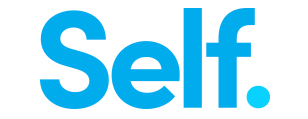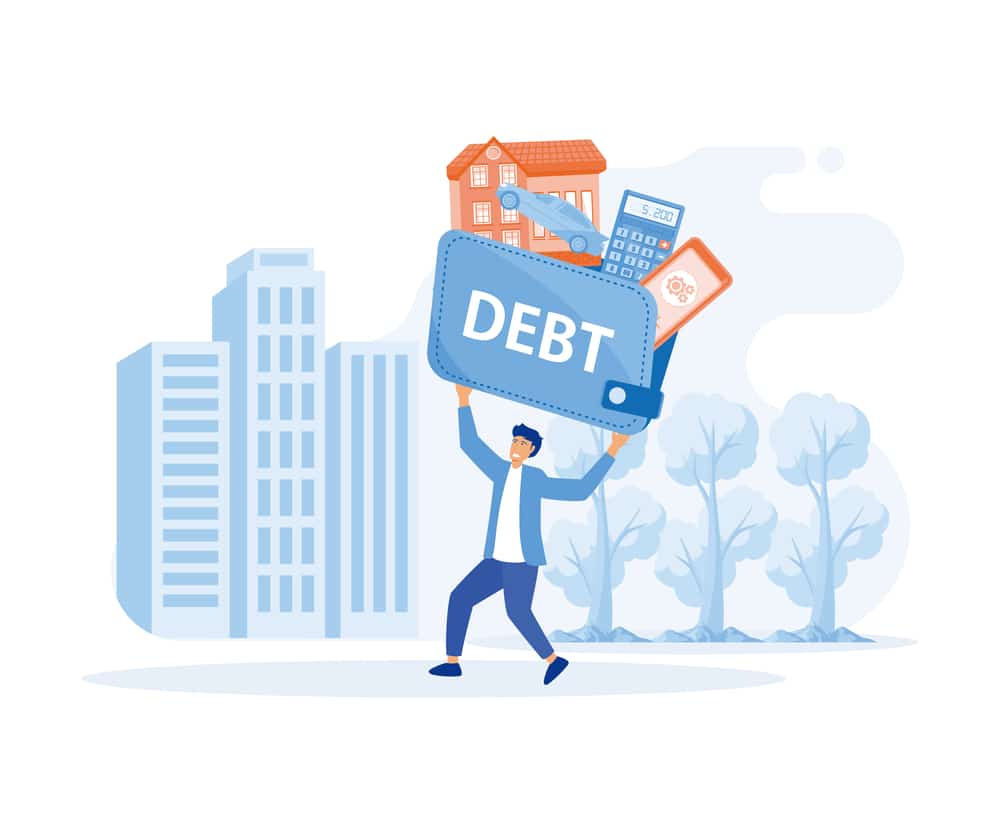Editorial Note: We earn a commission from partner links on Doughroller. Commissions do not affect our authors’ or editors’ opinions or evaluations. Learn more here.
Here is one of the most frequently asked questions in all of personal finance: “How do I get out of debt?” At one level, eliminating debt is simply about following a few steps:
- Stop going into more debt
- Spend less than you make
- Pay off debt with the difference
If you follow these steps, eventually you’ll be debt-free. The problem is that following these steps isn’t always easy. And to make matters worse, there is a lot of “help” out there that’s not helpful. From debt consolidation companies to books like Kevin Trudeau’s “Debt Cures” that I wouldn’t recommend to my worst enemy, there are a lot of promises made that getting out of debt is easy. It’s not.
Tackling your debt may be one of the hardest things you’ll ever do. You have to control your emotions, which can play a big part in how you make financial decisions. You have to educate yourself about everything from home loans to credit cards to credit scores. And you have to discipline yourself in the way you manage and spend money.
Controlling your spending and paying off your debt is not an easy thing to do. But the good news is that you can do it. If you want to be debt-free bad enough, you can make it happen.
To help you reach your goal of being debt-free, we’ve assembled a list of 25 tips and tools.
The Best Tools to Get Out of Debt
The first step in tackling any problem is to fully understand it. When it comes to debt, you should know everything about the terms and conditions of the money you owe. Here are some tips and tools to help you understand your debt.
- Put Your Debt On Paper: The very first step is to make a list of the debts you have. The list should include the following information: The name, address, and phone number of the creditor; the outstanding balance; the interest rate; the minimum payment; and any other information you feel is important. Even in the age of computers, I like to write out my debt on paper, at least at first.
- Take Advantage of Personal Finance Software: By now many people already have and use personal finance software. If so, you can use the tools within the software to record all of the debt you owe and to develop a plan to pay off that debt.
- Use Free Online Tools: There are also budget tools available online for free. These tools can track your debt and are easy to use. And it’s hard to beat free!
- Use Free Excel Templates: Microsoft offers free Excel templates that can help you track your debt and budget. Microsoft offers free templates for just about everything, including resumes.
- Involve Others: Your spouse or significant other must be involved in the process. If you don’t see eye-to-eye on finances, it can make getting out of debt even more difficult than it already is. It’s not uncommon for one spouse to take the lead in handling finances, and that’s fine. But you both should be on board, particularly as you develop a plan to tackle the debt.
Create a Plan to Pay Off Your Debt
After you’ve written down all your debts, it’s now time to determine how to go about paying off these bills. A solid plan should not be complicated.
There is no single approach; you need to do what works best for you and your family. There are, however, some important considerations and tools that can help you develop an effective debt repayment plan:
- Debt Repayment Calculator: As a starting point, it’s helpful (and sometimes painful) to see how long it will take you to pay off your debt if you make just the minimum payments. And there is a free debt repayment calculator that is very easy to use. While the plan will involve making extra payments, the starting point is to understand what you are up against making just the minimum payments on your debt, and this calculator will help you do just that.
- Prepare a Budget: For many, the word “budget” is the dreaded “B” word. But the fact is that you need a budget to control your spending and better manage your money. Remember that it’s the money you don’t spend each month that will go toward paying down your debt.
- Be Aggressive About Paying Off Debt: Dave Ramsey talks about tackling debt with “gazelle” intensity. It’s about being aggressive in paying off your debt. As you work through your budget, recognize that every dollar counts and that the more you throw at your debt, the less interest you’ll pay and the faster you’ll get out of debt.
- Be Realistic About Paying Off Debt: While we all want to get out of debt fast, we do have to be careful not to get too aggressive. Paying off debt is a lot like going on a diet. You can commit to never eating foods that are bad for you, but is that realistic? The thought of never eating ice cream is just too much to bear. The same is true with debt. Yes, sacrifices will have to be made to meet your financial goals, but you need balance in life, including your financial life.
- Don’t Forget Your Emergency Fund: An emergency fund is an important part of a debt-elimination program. While you may be tempted to put 100% of your extra cash toward debt, keeping at least some of it aside for emergencies will help break the reliance many have on credit. When the car needs new tires, it’s better to turn to the emergency fund than it is the credit card. I’ll also add that while you can use a high-yield savings account for your emergency fund, a short-term, high-yield CD may be the better bet. While most CDs do charge a penalty if funds are withdrawn before the end of the term, that penalty can help keep you from accessing the funds for anything other than a true emergency. In addition, there are short-term CDs available with 3 or even 1-month terms.
- Order Your Debt: With your budget in place and an understanding of how much extra money you can put toward debt, it’s now time to map out a specific plan. The question is this–which debt will you put your extra money toward first? The first thing is not to get too hung up on this question. Depending on your situation, one approach may be better than another, but if you consistently pay down your debt without incurring more debt, you’ll make great progress regardless of which debt you pay first. That said, here are the top three approaches to deciding how to tackle your debt:
- Highest Interest Rate First: With this approach, you put all the extra cash you have on the debt that has the highest interest rate. This approach will result in the lowest interest charges and the fastest debt repayment possible.
- Smallest Balance First: This is the Dave Ramsey approach. He suggests targeting the debt with the smallest balance first. While that debt may not have the highest interest rate, the theory is to get one debt paid off as fast as possible. The rationale is twofold. First, paying off a debt gives you a feeling of accomplishment, which may be just the motivation you need to keep on track. Second, by paying off a debt completely, you free up the cash that was needed to make monthly payments to that bill. While you are likely to put that cash to the next debt, in an emergency, you could use it for other purposes. In other words, by paying the smallest debt first, you free up cash flow.
- Non-Revolving Debt First: While many talk about the two approaches above, few look at the type of debt when deciding which one to pay first. Recall that revolving debt, like credit cards, allows you to borrow again after you’ve paid down the debt. Non-revolving debt, like a car or school loan, does not permit you to borrow again as you pay down the debt. With a car loan, once the debt is paid, the loan is gone. With a credit card, once the debt is paid, the card is still there to use again if you so choose. For this reason, I’ll often focus on the non-revolving debt first. Why? Because I can’t go out and charge up the debt again once it’s paid. This is purely a psychological issue, but an important one, particularly if you fear you may lack some discipline once some of your debt is paid off.
Improve Your Credit Score
When many people think of credit reports and credit scores, they see them as important if you want to apply for a loan. But your credit report and score are also absolutely critical to getting rid of debt. With a good credit score, you qualify for lower interest rates that can help bring down your total interest charges. With bad credit, you’re stuck paying double-digit rates. So let’s look at some tips and tools that can help you.

Self is a unique company that offers to help you build your credit score. Instead of applying for a credit card with high fees or a high interest rate, Self provides a way for you to increase your credit score through a self-funded loan. After you’ve applied for your loan and selected a payment option, you’ll be on the path to building your credit. Once you’ve completed your payments, the entire principal is returned to you minus the interest rate.
- Get your Free Credit Report: The starting point is to get your free credit report and check it for errors.
- Get your Free Credit Score: Next, you should get your free FICO score. You can’t get this from annualcreditreport.com, but several sources offer your real FICO score in exchange for signing up for a free trial of a credit watch program. You can always cancel before the end of the free trial if you don’t want to keep the service.
- Pay Your Bills on Time: Many factors go into a credit score, but one of the most important is paying your bills on time. Do whatever is necessary not to forget a payment, and make sure you make the payment far enough in advance of the due date so that there is no chance it will be late.
- Don’t Close Accounts: As a general rule, don’t close credit cards and other revolving accounts. One of the factors in determining your credit score is the amount of debt you have in comparison to the amount of available credit. The greater the available credit, the better. You can always cut up some of your cards if you don’t want to risk using them but don’t cancel them. Here are some other tips to improve your credit score.
- Understand the Importance of Your Credit Score: As noted above, your credit score is an important tool in getting out of debt as quickly as possible. To underscore this, check out these stats from myFICO.com for individuals with a FICO score of 660 (fair credit) versus 760 (excellent credit):
- Mortgage: Let’s say the average interest on a home loan is 5.766% for excellent credit, with fair credit, it might jump up to 6.379%.
- Car Loan: With a credit score of 760, you may expect a car loan interest rate of about 6.3%. With a score of 660, the rate increases to about 9.8%.
In short, your credit score matters.
Get the Lowest Interest Rates Possible on Your Debt
While you are working to improve your credit, it’s important to be on the lookout for ways to reduce the interest rate on your debt. Whether the debt is a home loan, car loan, credit card, or some other debt, getting the lowest possible interest rate will help speed up the time it takes to eliminate your debt. Here are some tips and tools to help you lower your rates:
- Refinance Your Mortgage: The general rule is that you should refinance if you can lower your interest rate by 1%. While that’s a good starting point, it is important to also consider how long you plan to stay in the home and whether you need to convert from an adjustable-rate mortgage to a safer fixed-rate loan.
- Negotiate Lower Interest on Home Equity Lines of Credit: If you have a home equity line of credit, compare your interest rate with current market rates. If you think you can do better, step one is to call the mortgage company and request a lower rate. We did this successfully with our home equity line of credit. While there are no guarantees, it can’t hurt to try.
- Lower the Interest on Credit Cards: Because interest rates on credit cards have risen so much in the last year, getting a lower rate on credit card debt can save a lot on interest payments. If you have a good credit score, you can qualify for a 0% balance transfer credit card.
- Be Careful with Debt Consolidation: While it is important to take advantage of the lowest interest rates possible, the one area where you want to be careful is with debt consolidation companies. While they may promise you low rates and a single payment, the number of consumer complaints about such companies is exploding. As an alternative, you can refinance and consolidate your debts online.
Find the Best Personal Loan for You
Spend Less and Make More
As I said at the start of this article, one important aspect of getting out of debt is spending less and making more. While these topics are the subject of entire books, here are a few resources to get you started:
- Painless Money-Saving Tips: There are countless ways to save money without sacrificing your standard of living. From canceling cable to greening your home, you’ll find plenty of ideas on how to knock hundreds of dollars (or more) off your monthly budget.
- A Must-Read Book: If I had to pick one personal finance book to read, it would be Your Money or Your Life: 9 Steps to Transforming Your Relationship with Money and Achieving Financial Independence. This book puts money in perspective and was for me a real source of motivation to get out of debt.
- Earn Extra Income: Any extra income goes a long way to getting out of debt. I’ve learned this firsthand from the money I’ve made blogging, all of which either goes to charity or paying off debt. If an extra few hundred dollars a month can help you get out of debt faster. for some ideas and links on how to build a second income.
Final Thought on How to Get Out of Debt
Managing debt is essential to a healthy financial life. Mortgages, student loans, and credit cards can be valuable tools when used properly and nightmares when used improperly. What defines that difference is usually the interest rate and the ability to make on-time payments.
Always review your debt to see if rates can be lowered and if debts can be paid off. It’s always the right time to refinance for a lower rate or use low-interest-bearing savings to pay down high-interest debt.


